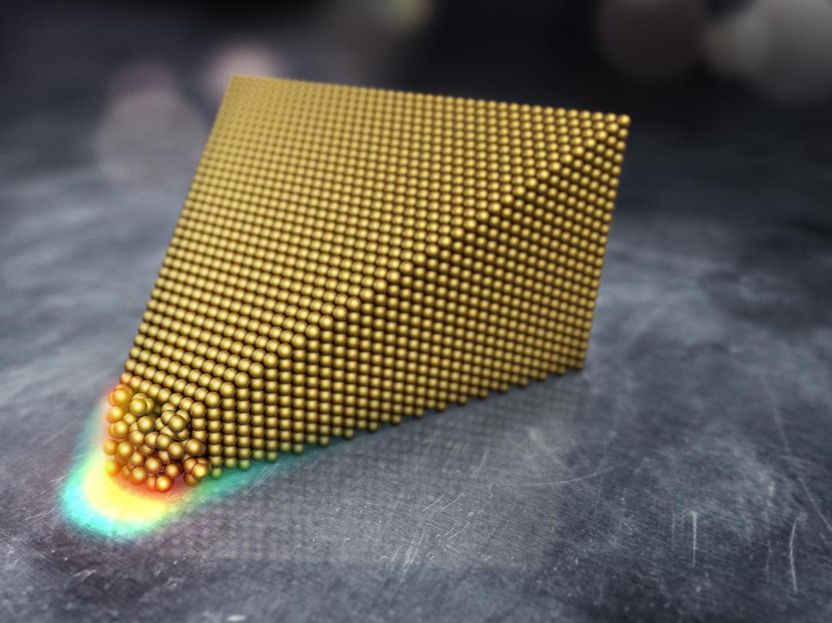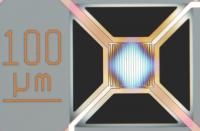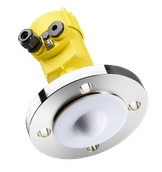How to melt gold at room temperature
Advertisement
When the tension rises, unexpected things can happen - not least when it comes to gold atoms. Researchers from, among others, Chalmers University of Technology, Sweden, have now managed, for the first time, to make the surface of a gold object melt at room temperature.

The illustration shows the atoms of a gold cone exposed to a strong electric field. We also see the field (around the tip of the cone) that excites the gold atoms. They break almost all their connections to each other and the surface layers begin to melt.
Alexander Ericson
Ludvig de Knoop, from Chalmers' Department of Physics, placed a small piece of gold in an electron microscope. Observing it at the highest level of magnification and increasing the electric field step-by-step to extremely high levels, he was interested to see how it influenced the gold atoms.
It was when he studied the atoms in the recordings from the microscope, that he saw something exciting. The surface layers of gold had actually melted - at room temperature.
"I was really stunned by the discovery. This is an extraordinary phenomenon, and it gives us new, foundational knowledge of gold," says Ludvig de Knoop.
What happened was that the gold atoms became excited. Under the influence of the electric field, they suddenly lost their ordered structure and released almost all their connections to each other. Upon further experimentation, the researchers discovered that it was also possible to switch between a solid and a molten structure.
The discovery of how gold atoms can lose their structure in this way is not just spectacular, but also groundbreaking scientifically. Together with the theoretician Mikael Juhani Kuisma, from the University of Jyväskylä in Finland, Ludvig de Knoop and colleagues have opened up new avenues in materials science.
Thanks to theoretical calculations, the researchers are able to suggest why gold can melt at room temperature. Possibly, the surface melting can be seen as a so-called low-dimensional phase transition. In that case, the discovery is connected to the research field of topology, where pioneers David Thouless, Duncan Haldane and Michael Kosterlitz received the Nobel Prize in Physics 2016. With Mikael Juhani Kuisma in the lead, the researchers are now looking into that possibility.
In any case, the ability to melt surface layers of gold in this manner enables various novel practical applications in the future.
"Because we can control and change the properties of the surface atom layers, it opens doors for different kinds of applications. For example, the technology could be used in different types of sensors, catalysts and transistors. There could also be opportunities for new concepts for contactless components," says Eva Olsson, Professor at the Department of Physics at Chalmers.
But for now, for those who want to melt gold without an electron microscope, a trip to the goldsmith is still in order.
Original publication
Other news from the department science
These products might interest you
Most read news
More news from our other portals
See the theme worlds for related content
Topic world Sensor technology
Sensor technology has revolutionized the chemical industry by providing accurate, timely and reliable data across a wide range of processes. From monitoring critical parameters in production lines to early detection of potential malfunctions or hazards, sensors are the silent sentinels that ensure quality, efficiency and safety.

Topic world Sensor technology
Sensor technology has revolutionized the chemical industry by providing accurate, timely and reliable data across a wide range of processes. From monitoring critical parameters in production lines to early detection of potential malfunctions or hazards, sensors are the silent sentinels that ensure quality, efficiency and safety.

































































